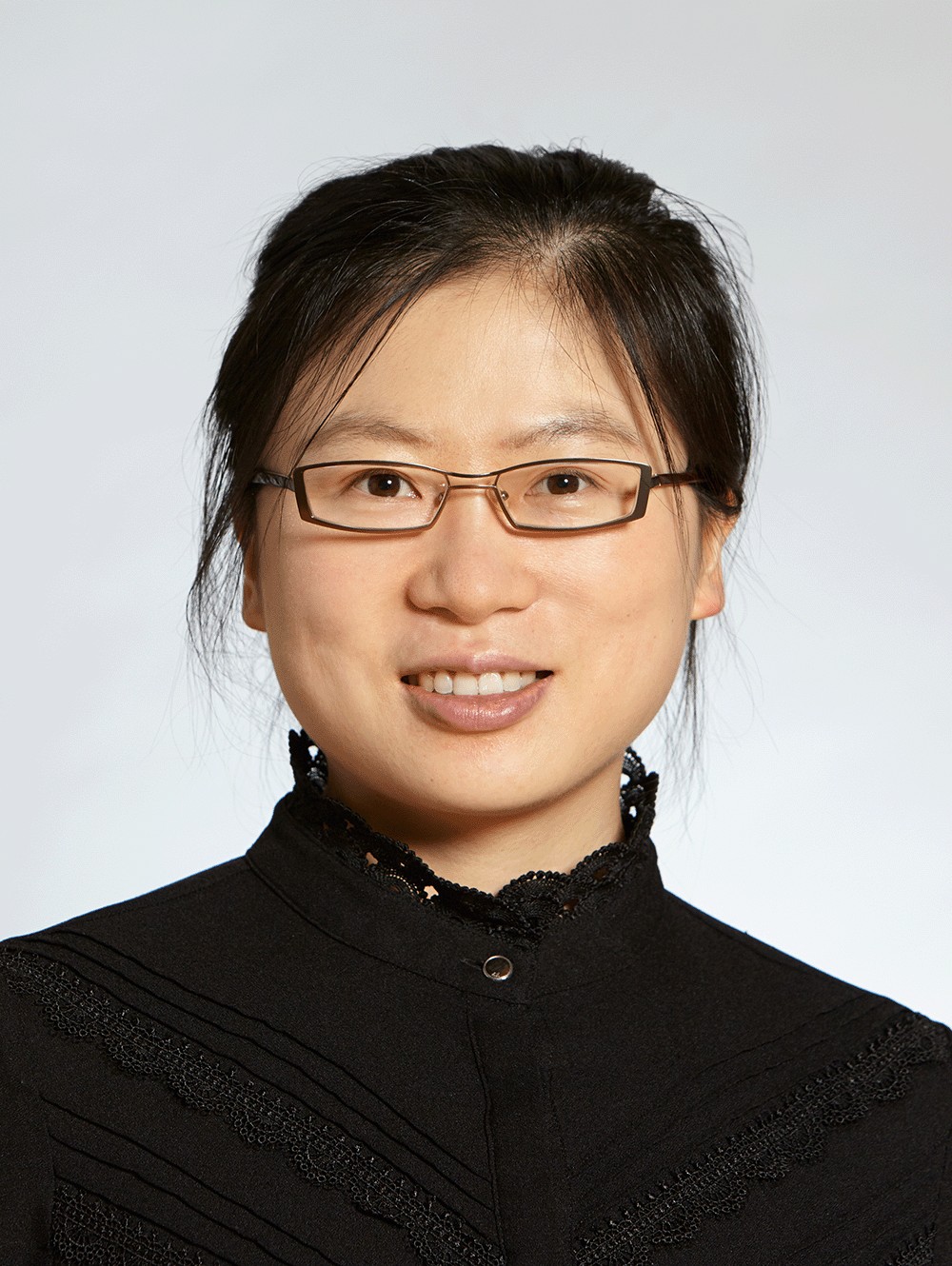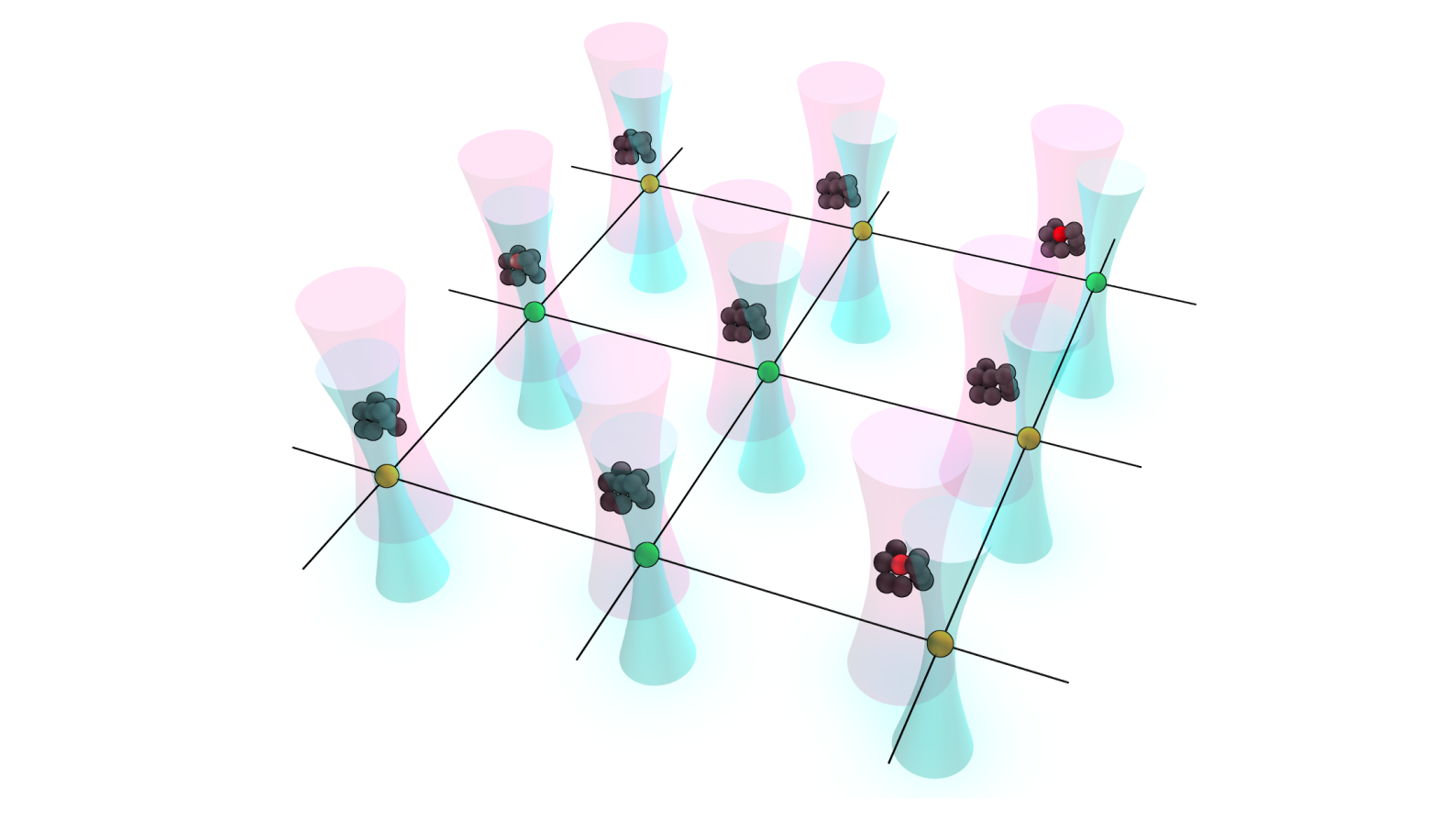Breaking new ground: Doubling down on neutral-atom quantum computing
Wenchao Xu works on arrays of optically trapped neutral atoms that combine two atomic species in a way that offers a new platform for advancing quantum science and technology.

Wenchao Xu, tenure-track Assistant Professor in the Department of Physics with a joint appointment at the Paul Scherrer Institute (PSI), believes that large arrays of neutral atoms make a promising architecture for quantum computing and simulation. Her project, which is financially supported by ETH Zurich and by a SNSF Starting Grant that began last year, puts forward what Xu refers to as a dual-type, dual-element atom array bringing together individually trapped ytterbium atoms and small ensembles of rubidium atoms. Each species would form a regular geometric pattern, as defined by the lasers used for trapping (see illustration).
In this system the ytterbium atoms would carry quantum information, whereas the rubidium atomic clouds would facilitate ancillary quantum operations on the quantum information stored within the ytterbium atoms by taking advantage of tunable interactions between the two species. For Xu, the most immediate goals with this setup are the realisation of a new quantum error detection method and the demonstration of quantum optical links between two spatially separated atomic arrays – two ambitious steps that will lend support to her chosen approach.

In March 2024 Xu and her team moved the experimental setup from ETH Hönggerberg to PSI, where they built the vacuum chamber that creates the ultra-high vacuum conditions required to isolate and trap neutral atoms. Within the following six months, the group succeeded in trapping ensembles of ytterbium and rubidium atoms: this was also made possible through careful planning, which required Xu and her colleagues to think ahead of which parts and equipment they would need for their setup. Of the two atomic species, rubidium is well-known and studied – but ytterbium isn't. This leaves some questions unanswered, such as how these atomic species interact with each other and what the optimal atomic states for quantum information processing are. To tackle these questions, Xu and her team have been working on the calibration of the interactions between rubidium and ytterbium atoms through spectroscopic measurements; they have also been setting up the optics for generating larger arrays. They expect to be able to realise a large-size two-dimensional atom array over the next few months.